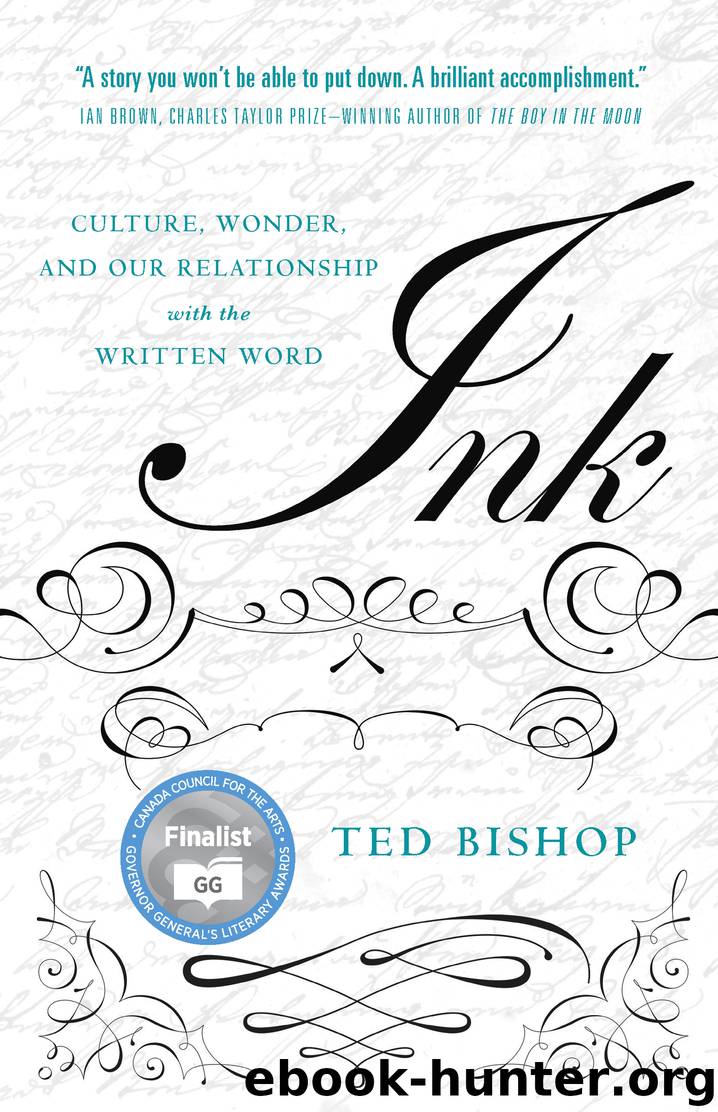Ink by Ted Bishop

Author:Ted Bishop
Language: eng
Format: epub
Publisher: Penguin Canada
Published: 2017-06-06T04:00:00+00:00
V
The next morning we hired a car to take us to Huangshan, the “Yellow Mountain,” so-called because legend has it that the Yellow Emperor ascended to heaven from here in 2598 BCE. This is the region that has inspired all those scroll paintings you see in Chinese restaurants in North America—fluted slabs with knubbly pine trees on top, maybe a waterfall and a little scholar’s pavilion tucked in at the base. What was once a place of pilgrimage is now a tourist trap where the parking is extortionate and the fences sag with padlocks placed by lovers to signify their eternal, locked-in love, but all grumbling stops as the gondola swings you up through the spires. With my Canadian Rockies snobbery I expected pretty hills, but these are real mountains—they rise seventeen hundred metres from the valley floor, with granite pitches that would give any rock climber itchy fingers. The winds are harsh and the pines dig in with dragon-claw roots. Huangshan is like Machu Picchu, with lung-sucking climbs up endless fifteen-hundred-year-old stone steps, and then downhills swift and effortless—until your knees start to give. The pain adds another dimension to those restaurant paintings.
I tried unsuccessfully to take pictures without people and to imagine the mountain without the big television tower on top, yet the area was still sublime, beautiful, and fearsome. Mr. Chi had never been there, and he too was dazzled by the beauty and scale of the place. We rambled for a couple of hours and then stopped at the White Cloud Hotel. Mr. Chi taught me how to say “fried rice” (chao fan) and “dumplings” (jiaoza) so that I could order if I was in a restaurant with no picture menu. (I didn’t know that a week later I’d be travelling alone out to the edge of Tibet, glad of this tip.) We talked about what it must have been like to climb these steep paths in early dynasties, gathering gnarly pine roots in a basket. Huangshan was so famous for its pine trees that one tenth-century ink maker moved to Shexian because of them. The compiler of The Mustard Seed Garden Manual says that pine trees “resemble young dragons coiled in deep gorges; they have an attractive, graceful air yet one trembles to approach them for fear of the hidden power ready to spring forth.” Another writer likens these “young dragons” in gorges to a spiritual power emanating from the unconscious, a notion that seemed less fanciful now that we were among them.
Back in Shexian, as we walked across the bridge, the Christmas-style lights edging the buildings reflected in the water, Mr. Chi asked me what authors I liked. I told him I was reading Du Fu. “Du Fu?! He is one of China’s greatest poets. The first poem my father made me memorize was by Du Fu. I did not want to. I had to recite it for him, and for many years I did not understand it, but now I do.”
He went on, “I wrote a poem once, in English.
Download
This site does not store any files on its server. We only index and link to content provided by other sites. Please contact the content providers to delete copyright contents if any and email us, we'll remove relevant links or contents immediately.
Wonder by R.J. Palacio(8434)
Mastering Adobe Animate 2023 - Third Edition by Joseph Labrecque(3725)
Unlabel: Selling You Without Selling Out by Marc Ecko(3576)
Ogilvy on Advertising by David Ogilvy(3489)
Hidden Persuasion: 33 psychological influence techniques in advertising by Marc Andrews & Matthijs van Leeuwen & Rick van Baaren(3457)
Drawing Cutting Edge Anatomy by Christopher Hart(3443)
The Pixar Touch by David A. Price(3351)
POP by Steven Heller(3300)
The Code Book by Simon Singh(3060)
The Art of War Visualized by Jessica Hagy(2934)
Slugfest by Reed Tucker(2927)
The Curated Closet by Anuschka Rees(2901)
Rapid Viz: A New Method for the Rapid Visualization of Ideas by Kurt Hanks & Larry Belliston(2817)
Stacked Decks by The Rotenberg Collection(2798)
365 Days of Wonder by R.J. Palacio(2739)
The Wardrobe Wakeup by Lois Joy Johnson(2722)
Keep Going by Austin Kleon(2684)
Tattoo Art by Doralba Picerno(2588)
Tell Me More by Kelly Corrigan(2581)
